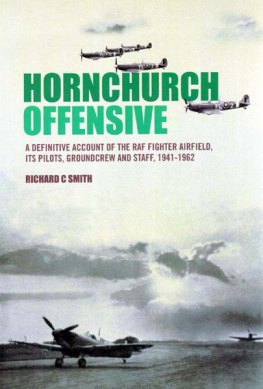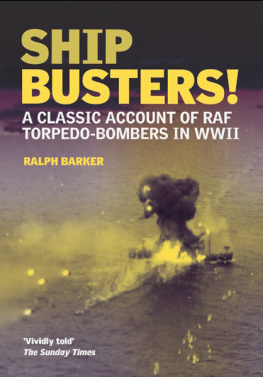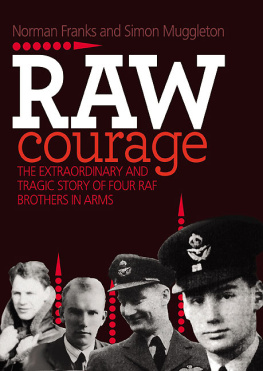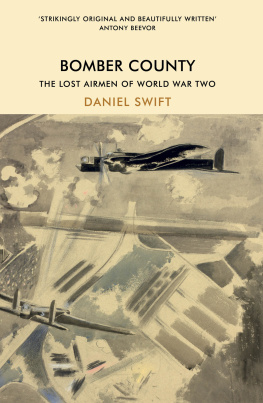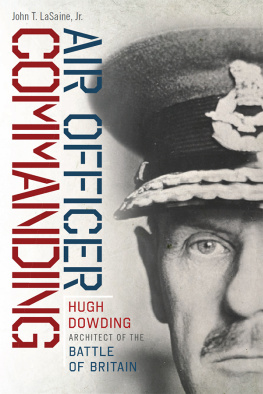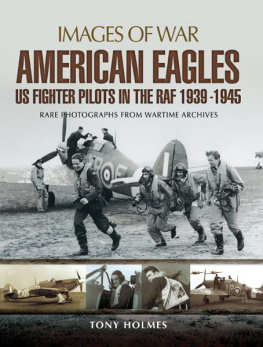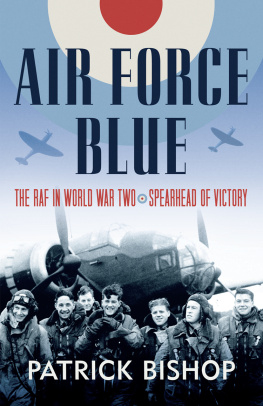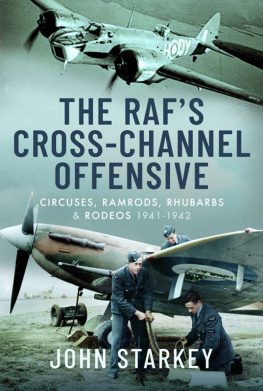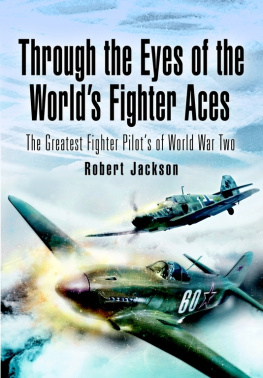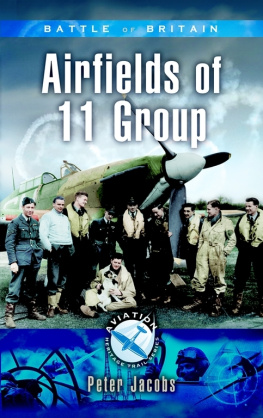Published by
Grub Street
4 Rainham Close
London SW11 6SS
First published in hardback 2001
Copyright this edition 2008 Grub Street, London
Text copyright Richard C. Smith
British Library Cataloguing in Publication Data
Smith, Richard C.
Hornchurch offensive: the definitive account of the RAF fighter airfield, its pilots
groundcrew and staff
Vol. 2: 1941-1962
1. Great Britain. Flying Corps History
2. RAF Hornchurch History 3. RAF Hornchurch
I. Title
358.400942209041
ISBN 978-1-906502-15-7
EPUB ISBN: 9781909166738
All rights reserved. No part of this publication may be reproduced,
stored in a retrieval system, or transmitted in any form by any means,
electronic, mechanical, photocopying, recording, or otherwise, without the
prior permission of the copyright owner.
Typeset by Pearl Graphics, Hemel Hempstead
Printed and bound in Great Britain by
MPG Books Ltd, Bodmin, Cornwall
Grub Street only uses FSC (Forest Stewardship Council) paper for its books
CONTENTS
ACKNOWLEDGEMENTS
Without the help of the men and women listed below, with their own personal memories of their time at RAF Hornchurch, this second volume of Hornchurchs history would not have been possible. Once again, they helped with facts, figures, photographs and most of all, the all-important testimonies of their own lives, whether in the war years, when they held the torch of freedom along with many others, or during the post-war period, when they still continued the tradition of service to Monarch and country. They all played their part in what is the history of this famous airfield. Sadly, as with the first volume, since being interviewed some have since passed on. I salute them all.
Flight Lieutenant William Tex Ash, MBE
Squadron Leader Robert Beardsley, DFC, RAF Retd
Squadron Leader Gordon Braidwood, DFC, RAF Retd
The late Air Chief Marshal Sir Harry Broadhurst, GCB, KBE, DSO, DFC, DSO
Squadron Leader Peter Brown, AFC, RAF Retd
Lieutenant General Baron Michael Donnet, cvo, DFC, FR, AE Retd
Wing Commander Frank Dowling, OBE, RAF Retd
Flight Lieutenant Trevor Gray RAF Retd
The late Wing Commander Joe Kayll, DSO, DFC
The late Wing Commander John Kilmartin, DFC
Squadron Leader Arthur Leigh, DFC, DFM, RAF Retd
The late Air Vice-Marshal David Scott-Maiden, DSO, DFC
Air Commodore George Mason, DFC, DFC (US), FBIM, RAF Retd
The late Group Captain Wilfred Duncan-Smith, DSO, DFC
The late Squadron Leader Jack Stokoe, DFC
Mervyn Young
Mr Alfred Allsopp
Mr Robert Ballard
Mr Bernard Batchelor
Mr Harold Bennett
Mr William Bird
Lady Jane Broadhurst
Mr Max Bygraves OBE
Mrs Joy Caldwell
Mrs Patricia Churchill
Mr John Cox
Mrs Pamela Duncan-Smith
Mr Ken Finding
Mrs Ada Hewitt
Mr Robert Kingaby
Mr Howard LaRoche
Mr Roy Little
Mr Don McNaught
Mr Stan Reynolds
Mr G.F Ricky Richardson
Special thanks to Lieutenant General Michael Donnet; it is an honour to have him contribute the Foreward to this book. Thanks are in order once again to Squadron Leader Peter Brown AFC for his Introduction, help and advice. To Peter Onion Oliver for all his time and help at the Public Record Office, which made all the difference. Thanks to my publisher John Davies, and Anne, Louise and Dominic at Grub Street for another excellent production. To aviation artist Barry Weekley for another amazing painting to grace the front cover. Thanks to all those who support the work of The Hornchurch Wing.
Thanks also go to friends and fellow historians for their continued support and help:
Jack and Pamela Broad, Squadron Leader Peter Brown, AFC, RAF Retd, Steve and Val Butler, Alison and Dave Campbell, Mrs May Clark, Mr Reg Clark, John Coleman, John and Anne Cox, Joe and Drene Crawshaw, Dave Davies, Wing Commander Frank Dowling, OBE, RAF Retd, Ted Exall, John Gill, Squadron Leader Dave Glaser, DFC, RAF Retd, Alan and Sue Gosling, Flight Lieutenant Les Harvey, John Jones, Gary Lilley, Frank and Philippa Mileham, Geoff and Lesley Nutkins, Emma Palmer, David Ross, Ricky and Joyce Richardson, Ken Slaney, Air Marshal Sir Freddy Sowrey, KCB, CBE, AFC, RAF Retd, Squadron Leader Gerald Stapme Stapleton, DFC, RAF Retd, Wing Commander John Young, AFC, RAF Retd, Historian of the Battle of Britain Fighter Association.
Thanks also to the Public Record Office, Kew, The Imperial War Museum, Lambeth, The Battle of Britain Fighter Association, RAF Historical Branch, RAF Innsworth Personnel Management Agency, No.452 Air Training Corps, Hornchurch, The Purfleet Heritage and Military Centre, The Romford Recorder, The Sanders Draper Senior School, Alan Cooper & Joan Bedford of The London Borough of Havering Council and Christine Hipperson of the Elm Park Library.
Finally, a special big thank you to my family for all their patience, help and understanding in my days and nights of research in getting the whole project together.
FOREWORD
by
Lieutenant General Aviateur Baron Michael Donnet, CVO, DFC, FR, AE
It is a great honour for me to write these few words for the book, which narrates the history of the Royal Air Force Station, Homchurch, during the years following the Battle of Britain. In doing so I am particularly touched, to follow Air Marshal Sir Frederick Sowrey KCB, CBE, AFC , whose father flew as a pilot from Suttons Farm airfield during World War One and shot down a German Zeppelin in 1916. This had always fascinated me, and to my surprise I discovered a piece of structure from an enemy airship which had been framed, when I entered the Homchurch Officers Mess, on my arrival as a pilot of No.64 Squadron in October 1941. We were to remain 18 months in the sector.
I was impressed by the layout of the station and its smooth running, and also the efficiency of the staff and of the personnel of all trades. A great devotion to duty was most noticeable. The scars left from the bombing during the Battle of Britain were hardly visible and the station had recovered its vigour.
The summer of 1941 had seen the Royal Air Force on the offensive. The battle on the airfront had been moved over to the German-occupied countries in Europe. The Luftwaffe had to be kept under pressure and its fighters engaged in air battle; Homchurch squadrons were to pay heavily in these operations.
In the winter of 1941/42 it was relatively calm, except for the excitement created by the sailing through the Channel of the German battle-cruisers; the spring however, brought in a period of intensive offensive air operations. The Homchurch Wing consisted of three squadrons sometimes carrying out two sorties a day. Many different squadrons made up the Wing, coming from British, Commonwealth and Allied countries; including pilots whose countries had been overrun by the Germans.
The pilots all displayed the same keenness and fighting spirit. There were successes, but also casualties; the air battle during the Dieppe landings was an illustration of this.
Homchurch remained in the front line until the time of the invasion of Normandy, when the scene of the air battle moved south.
Through all these years, Homchurch lived up to its reputation mainly due to the qualities and efficiency of its leaders, the Station Commanders first, men such as Harry Broadhurst and George Lott, and the fighting spirit of the Wing Leaders, Eric Stapleton, Peter Powell, Paddy Finucane and Peter Hugo and many other great fighter pilots.
One has to mention the station personnel, men and women of all ranks and all trades. They all displayed the same high spirit and the same devotion to duty. They lived up to the reputation established by those who had preceded them during World War 1, and by their action, they did contribute greatly to the final victory in World War 2.
Next page
